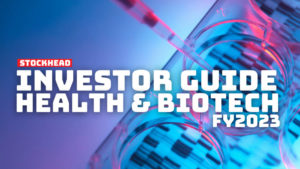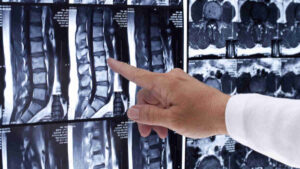The COVID-19 pandemic left a lot of medical device companies scrambling to keep up with the unprecedented disruption.
And when we caught up with Micro-X (ASX:MX1) CEO Peter Rowland earlier this week, he said the main challenge was presented by bottlenecks associated with getting the end product into customers’ hands.
The medtech company’s core product is its Nano mobile x-ray unit, which was originally built and developed by Hydrix (ASX:HYD).
The x-ray’s lightweight model proved to be well suited to chaotic hospital environments. But for Rowland, the main priority was all about distribution.
“I don’t think I’ve ever seen an industry transformed so quickly or fundamentally,” he said. “I imagine for the respirator industry it’s been similar but it’s just been huge, and I think the speed of that requirement was what took everyone by surprise.
“All in all I think the COVID-19 response has been very good, and we’ve worked out the answer to that (demand) is to have a very high level of readiness.”
Inventory management
Prior to the pandemic, sales orders would typically come through predictable funnels where a hospital customer would express interest 90 days in advance and ask for indicative pricing.
But at the height of the COVID-19 crisis, “24 hours before receiving an order we had no clue where it was coming from”, Rowland said.
“Now when someone wants a batch of 10 or 20 units they want it next week, not in two months like they used to request. And most x-ray manufacturers around the world have had exactly the same experience.”
The end result of that frenetic activity was a relatively strong June quarter, as Micro-X sold $2.1m worth of Nano units to a customer base spanning Australia, Europe, the US and Asia.
“I think that momentum’s continuing,” Rowland said.
“If you think about it conceptually, we got a lot of orders through February, March and April and we were scrambling to produce them.
“So there was sort of a lag and we had an order backlog. Now we’ve worked through that and we’re building next units for almost immediate delivery.”
Strategic raise
In line with that strategy, the company’s $15m capital raise in April was focused around building increased capacity for inventory management.
“In effect it’s a low-risk way to spend the money we raised because we’ll use these (Nano units) sooner or later,” Rowland said.
“There’s much more potential for the company to have inventory on our shelves ready to be built, than having dollars in the bank ready to be spent. This way whatever happens next, we’re ready for it.”
Rowland added the company had removed some manufacturing “bottlenecks” at its production facility by investing in some additional processing equipment.
And some of the funds will also be used to pursue sales opportunities in the US, where Micro-X recently got FDA 510(k) for its Rover product — a portable piece of x-ray equipment intended for defence forces that build temporary medical facilities.
“The 510k is kind of the starting gun. We’re planning to go the direct sales route with the US army because we’ve already made some good connections there. So that’s where we’re at now, we’re trying to get a unit over there and get some demos lined up.”
Looking ahead
As it looks to capitalise on the opportunity for portable x-ray technology, Rowland said Micro-X was also in discussions with multinational equipment manufacturers about collaboration efforts.
“I think in terms of developing an electronically controlled x-ray tube, we kind of got there first and we’ve protected ourselves with a patent as well,” Rowland said.
“It’s a bit unusual for an Aussie company to find itself in this in a global market. All the big names — Siemens, Philips — they’re coming to talk to us about collaboration.
“They want to work with us because they kind of realise what we’ve got now. So we’re looking at the bigger picture of being a real tech disruptor.”
You might be interested in












